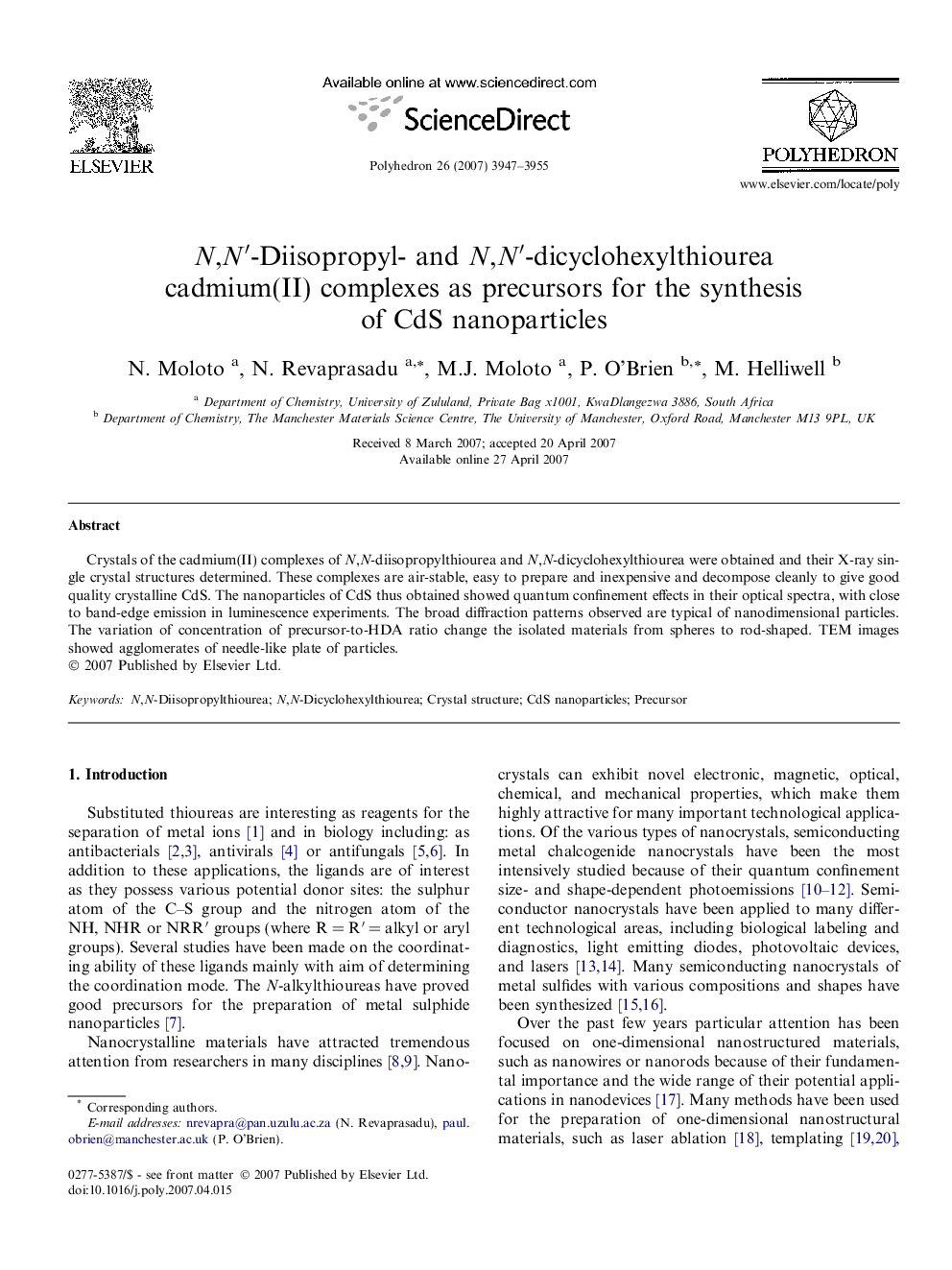| Article ID | Journal | Published Year | Pages | File Type |
|---|---|---|---|---|
| 1339776 | Polyhedron | 2007 | 9 Pages |
Crystals of the cadmium(II) complexes of N,N-diisopropylthiourea and N,N-dicyclohexylthiourea were obtained and their X-ray single crystal structures determined. These complexes are air-stable, easy to prepare and inexpensive and decompose cleanly to give good quality crystalline CdS. The nanoparticles of CdS thus obtained showed quantum confinement effects in their optical spectra, with close to band-edge emission in luminescence experiments. The broad diffraction patterns observed are typical of nanodimensional particles. The variation of concentration of precursor-to-HDA ratio change the isolated materials from spheres to rod-shaped. TEM images showed agglomerates of needle-like plate of particles.
Graphical abstractThe two complexes [Cd(CH3COO)2(SC(NHC6H11)2)2] (I) and [Cd(CH3COO)2(SC(NHC3H7)2)2] (II), were characterized by crystallography and indicate bonding through sulphur from the alkylthiourea ligands and also the acetate binding through oxygen atoms. Upon thermolysis of these complexes in HDA (hexadecylamine), CdS nanoparticles were obtained, which showed quantum confinement in their optical spectra, broadening of peaks in the XRD and the TEM images confirms particles in the nanosized region.Figure optionsDownload full-size imageDownload as PowerPoint slide
